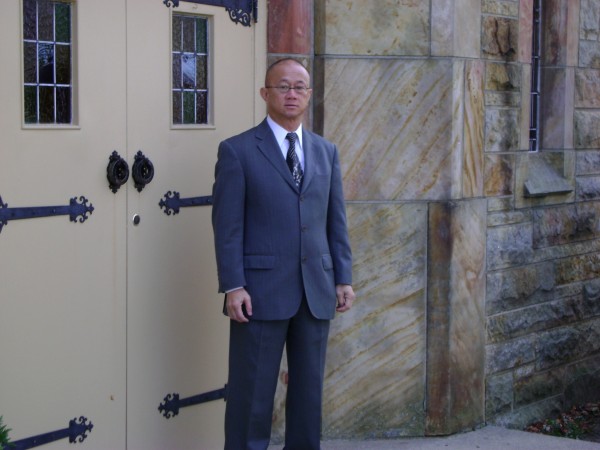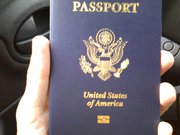
Rene Astudillo delivered this as an Opening Statement at a panel on Immigration held August 11, 2011 at the Annual National Convention of the Asian American Journalists Association, Detroit, MI. It is published on 8Asians with permission.
On January 27 of this year, I became a citizen of the United States. After being in this country for 22 years, hearing the words, “My Fellow Americans” in a pre-recorded video of President Obama — was, to say the least, exhilarating!
My long path to citizenship began in 1989, when I came to San Francisco to work as assistant manager for a multinational corporation based in Manila. I entered the U.S. with what is called an L-1 Visa, one that allows employees of a foreign company with an established business in the U.S. to legally work for that company. It was a 3-year work visa.
During those three years, I pursued one of my passions, which is journalism. I was contributing editor and writer for various publications in the San Francisco Bay Area and Honolulu. Most of my writings consisted of political commentary critical of the Philippine Government and as a result, my family in the Philippines received threats to the effect that I should be on the lookout upon my return to the country.
Unfortunately, my company’s business in San Francisco did not do very well and so it closed down in mid-1992, just as my work visa was about to expire.
Instead of returning to the Philippines, I decided to apply for political asylum based on the threats received by my family. By doing so, I was granted a work authorization by the then INS, which allowed me to seek other employment in the U.S.
The INS did not act on my application for political asylum for 7 years. I ‘d like to point out that my Employment Authorization Document allowed me to be employed legally, but it was not valid for re-entry into the United States had I left the country even for a short
visit or vacation abroad.
Within those 7 years, my dad passed away from a heart attack, my mom succumbed to cancer, my eldest brother died of kidney failure, another older brother died due to complications from diabetes and my youngest brother was murdered in a random attack by a drug addict. And guess who was consistently absent from those 5 funerals in the Philippines?
Finally, in 1999, I received a notice from the INS for an interview regarding my application for political asylum. To make the long story short, my application was denied, and this started my removal proceedings in immigration court. Simultaneously, an immigrant petition was filed on my behalf by my brother who is a U.S. citizen. We knew that the chances of such a petition were slim because siblings are in the lowest priority or preference in as far as family-based petitions are concerned. In the next couple of years, my removal proceedings hit a standstill because of postponements of scheduled hearings and the retirement of the immigration judge assigned to my case.
In 2002, an employment-based petition was filed on my behalf by AAJA. I had to go through a rigid process that included what is called Labor Certification.
In 2004, the employment-based petition was approved, but it wasn’t the end of the story. In order for my green card to be processed, a visa number issued by the State Department was required. Unfortunately, visa numbers for my particular category and country of origin were not available at that time.
In the meantime, my removal proceedings continued, and in spite of the approved immigrant petition, the immigration judge refused to grant any further continuation of the hearings. I was given the option of a voluntary departure which would have meant that I will not be able to return to the U.S. for 10 years. It would also have meant my separation from my American partner and my brother and sister who are both U.S. citizens.
I wasn’t ready to give up, so I filed a petition with the Board of Immigration Appeals for a reconsideration of the voluntary departure. Based on the approved employment-based immigrant petition which was simply awaiting a visa number to become available, I won the appeal.
So my case was back in immigration court in San Francisco. Fortunately, just in time for my next scheduled hearing, a visa number became available, so based on that, in December of 2005, the judge granted me permanent residency. Early this year, after 5 years as a permanent resident, I took my oath as a full-fledged American citizen.
 I am sharing my story because I believe that there is one thing missing in the immigration debate. There is a lot of talk about unauthorized immigration, but almost none whatsoever about the process of legal immigration and what it entails. Like many individuals going through the legal immigration process, I started at the end of the line so to speak. And for me that line took all of 22 years.
I am sharing my story because I believe that there is one thing missing in the immigration debate. There is a lot of talk about unauthorized immigration, but almost none whatsoever about the process of legal immigration and what it entails. Like many individuals going through the legal immigration process, I started at the end of the line so to speak. And for me that line took all of 22 years.
Rene Astudillo assumed the position of executive director of the Lupus Foundation of Northern California in January of 2009. He was executive director of the Asian American Journalists Association, a national organization of print, broadcast and online journalists from 1999-2008, and currently serves as elected national treasurer and governing board member.








